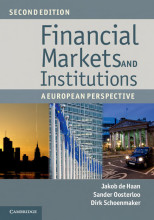Mittelstadt, Brent Daniel, Patrick Allo, Mariarosaria Taddeo, Sandra Wachter, and Luciano Floridi. 2016: ‘The Ethics of Algorithms: Mapping the Debate’
24 important questions on Mittelstadt, Brent Daniel, Patrick Allo, Mariarosaria Taddeo, Sandra Wachter, and Luciano Floridi. 2016: ‘The Ethics of Algorithms: Mapping the Debate’
What is the primary concern regarding evidence and algorithms discussed in the ‘inscrutable evidence leading to opacity’ part?
A. Predictability
B. Transparency
C. Competitiveness
D. Accessibility
What are the two primary components of transparency mentioned in the text?
A. Privacy and autonomy
B. Accessibility and predictability
C. Accessibility and comprehensibility
D. Opacity and scrutability
Discuss the ethical considerations associated with transparency in algorithms, drawing examples from the text.
- Higher grades + faster learning
- Never study anything twice
- 100% sure, 100% understanding
Examine the challenges posed by the "black box problem" in machine learning algorithms and its implications for decision-making transparency.
Evaluate the argument presented in the text regarding the power struggle between data subjects and data processors in the context of algorithmic transparency.
Explain how the lack of transparency in algorithms can impact the trust between data processors and data subjects, and suggest potential solutions to address this issue.
Consider real-world scenarios where algorithmic transparency is crucial. Discuss the potential consequences of insufficient transparency in those situations.
Discuss the role of the proposed map in organizing academic discourse on the ethics of algorithms. How does it address both epistemic and ethical concerns?
Explain the challenges and potential solutions related to the transformative effects of algorithms on privacy, as outlined in the text. Provide examples and discuss the implications for informational privacy.
In the context of the discussed challenges with malfunctioning and resilience of algorithms, elaborate on the distinctions between errors of design and errors of operation. How can responsibility be fairly apportioned in cases of dysfunctioning and misfunctioning?
Evaluate the role of transparency in ensuring the traceability of algorithms, especially in the context of machine learning. What are the challenges, and how can transparency be operationalized beyond code transparency?
Analyze the implications of the GDPR on decision-making algorithms, focusing on the responsibilities of data controllers and the rights of data subjects. Discuss potential challenges and the need for normative guidelines and practical mechanisms.
Discuss the significance of the prescriptive map in organizing ethical discourse on algorithms. How does it address gaps in coverage and contribute to discussions on the ethics of algorithms?
Elaborate on the interdependencies between distinct epistemic and normative concerns in the literature. Provide examples from the reviewed sections, such as the connection between bias and discrimination, and discuss how the proposed map addresses these interdependencies.
Analyze the limitations of solving ethical concerns at one level, as discussed in the conclusion. Provide insights into situations where even auditable algorithmic decisions based on well-founded evidence may lead to unfair and transformative effects. How can these challenges be addressed in future research?
The conclusion highlights that solving problems at one level does not address all types of concerns related to algorithms. Even auditable algorithmic decisions based on well-founded evidence may lead to unfair and transformative effects. Future research needs to delve into these challenges, exploring situations where discerning algorithms may have fewer objectionable effects. This requires a holistic approach that considers the various dimensions of ethical concerns, moving beyond simplistic solutions to address the complexity of algorithmic impact on society.
Explore the role of epistemic and ethical residues in the context of algorithmic tools. How do increasingly better algorithmic tools impact the identification of ethical problems, and what challenges remain in addressing the full conceptual space of ethical challenges posed by the use of algorithms?
Evaluate the challenges posed by the broad concept of 'algorithm' in developing a mature ethics of algorithms. How can the prescriptive map help navigate these challenges, and what are the implications for domain-specific work?
Discuss the distinction between the formal definition of an algorithm and its popular usage in public discourse. How does this conflation impact the discussion of the ethics of algorithms?
Analyze the six types of ethical concerns raised by algorithms, as presented in Figure 1. Provide examples and discuss why these concerns are relevant in the context of algorithmic decision-making.
Explore the challenges associated with the transparency of algorithms, as discussed in the text. How does the opacity of machine learning algorithms impact oversight, accountability, and trust in algorithmic decision-making?
Critically assess the ethical implications of acting on correlations produced by algorithms without establishing causality. Discuss the potential harm and impact on individuals when decisions are made based on inductive knowledge.
Six types of concerns related to ethical use of algorithms, epistemic concerns
Six types of concerns related to ethical use of algorithms, normative concerns
Six types of concerns related to ethical use of algorithms, overarching concern
The question on the page originate from the summary of the following study material:
- A unique study and practice tool
- Never study anything twice again
- Get the grades you hope for
- 100% sure, 100% understanding































